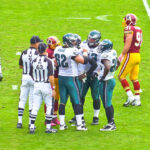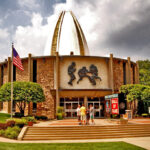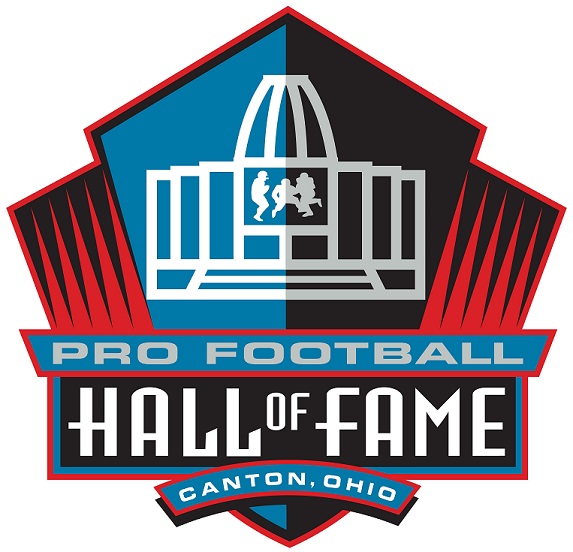When the St. Louis Rams traded the number two overall pick in the 2012 draft, they put their faith in Sam Bradford as their quarterback of the future and in General Manager Les Snead and Coach Jeff Fisher to put the collection of draft picks received in the deal to good use.
And the duo, at least to this point, appears to have done just that.
St. Louis received first and second round picks from Washington in 2012 and then additional first round picks in 2013 and 2014 in exchange for the pick the Redskins used on Robert Griffin III. Griffin was arguably the league’s most compelling story last season, as he took the league by storm in returning Washington to the top of the NFC East for the first time in the 2000s. Enough said. Assuming a return to health – and so far the medical reports are positive – this trade definitely worked out for them.
But it was a high price to pay. And Snead and Fisher immediately went to work, parlaying their newly-found collection of assets in the 2012 draft to continue laying a less flashy, but no-less solid foundation for improvement in St. Louis.
The Rams traded back again on draft day, with Dallas, dropping from sixth to 14th in order to add another second round pick, number 45. With the 14th pick, the Snead/Fisher duo took Michael Brockers, a defensive tackle who overcame an early high ankle sprain to really solidify the middle of the Rams’ defense. He added four sacks as well.
After adding wide receiver Brian Quick with their own second round pick, the Rams used the other Washington acquisition to grab Janoris Jenkins, the controversial-but-quality cornerback who had four interceptions, three touchdowns, 64 tackles and finished second in the NFL Defensive Rookie of the Year voting to Carolina’s Luke Kuechly.
Jenkins, third round draft pick Trumaine Johnson and free agent acquisition Cortland Finnegan teamed up to become “a deadly effective group of cornerbacks,” says Ryan Van Bibber, an editor with Turf Show Times who did a recent interview with Zoneblitz.
Snead and Fisher got itchy trigger fingers again later in the second round, trading the pick acquired from Dallas to Chicago in order to move back five spots, grabbing the 150th pick overall, a fifth rounder. At 50 he grabbed running back Isaiah Pead, who did little in 2012, but who already has been tabbed by some NFL insiders, including Adam Schefter, as a likely breakout candidate.
Pead was considered by some to be a reach and when he was beaten out for Steven Jackson’s backup job by seventh rounder Daryl Richardson, that did little to calm doubts. But Rams officials have been quoted saying he needed a year to learn to be a professional. And their confidence in the Pead/Richardson duo is evidenced by their willingness to let Jackson leave.
At 150, the Rams selected Rokevious Watkins, a guard from South Carolina. Watkins basically had a redshirt year in 2012. He was hurt a lot and, according to some reports, spent much of the year working on conditioning. But he’s mentioned as one of two potential starters at left guard for the 2013 spot, at least in the early days of the league calendar.
So, let’s summarize. In exchange for the Griffin pick, the Rams acquired:
- Michael Brockers, defensive tackle and anchor of the middle of the defense
- Janoris Jenkins, cornerback who finished second in 2012 defensive rookie of the year vote
- Isaiah Pead, running back and potential successor to Steven Jackson
- Rokevious Watkins, offensive lineman who could start at left guard in 2013
- Additional first round picks to use or trade with in 2013 and 2014
Add to that bounty the additions of Johnson, Quick, Richardson, wide receiver Chris Givens and kicker Greg Zeurlein, and you’ve got the makings of a draft that has laid the foundation for quick improvement.
Snead joined the Rams in February 2012. In the early going, he’s made moves that reminded me of a couple all-time greats. Less than a month after arriving he made the Griffin deal with Washington that netted, potentially, four starters in 2012 and two more first round picks, very remindful of what Jimmy Johnson did in Dallas, moving Herschel Walker to Minnesota for a boatload of picks.
He also appeared to notice a problem with the secondary. Much like Bill Walsh did in 1981 when he nabbed Ronnie Lott, Eric Wright and Carlton Williamson with three of the first four picks in the draft, Snead acted decisively, adding Jenkins and Johnson through the draft and Finnegan through free agency.
The moves paid off, too. St. Louis went from 2-14 in 2011 to 7-8-1 in 2012 and, perhaps more impressively, finished 5-0-1 against divisional foes, including wild card Seattle and Super Bowl runner up San Francisco.
This Rams team is far from a finished product, but I’ll be watching closely to see what Snead and Fisher have in store for the 2013 draft and the rest of the offseason. There’s a lot of competition in the NFC West, which arguably has the conference’s two strongest teams in the 49ers and Seahawks right now. But after analyzing the work of the Rams’ brass from 2012, I wouldn’t rule out the possibility that this team somehow sneaks into the hunt in 2013.







Trackbacks/Pingbacks